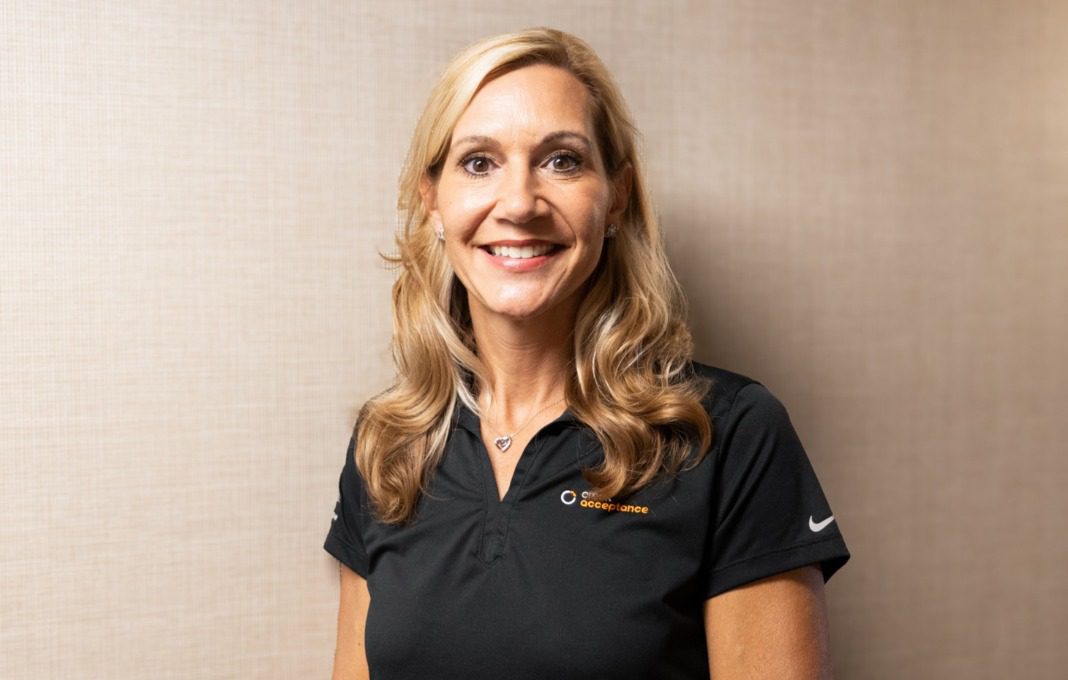Credit Acceptance’s Rummler Leads Master Class In Remote Success


When Wendy Rummler joined Credit Acceptance more than two decades ago, it was a relatively small car-financing company that required its customer-service workforce to be in the office in metro Detroit. Rummler never fathomed that one day she would be leading a masterclass in how to make a remote-only workforce as effective as one that was required to come in.
But today, as chief people officer of what is now a $2 billion company, that’s exactly what Rummler is doing in the wake of Credit Acceptance’s Covid-era decision to release its 2,200 employees to work from home all they want. Other CHROs could learn from how she goes about orchestrating human capital under such an arrangement, especially given that it represents a 180-degree turnabout from how Credit Acceptance operated just four years ago.
“We really were an in-person company,” Rummler says of the pre-pandemic era. “When Covid hit, we didn’t even have computers that were issued to people by the company. We were actually very resistant to the remote model because we attributed a lot of the success of our culture to being together each day.
“But when Covid happened, everyone had to go home, and we saw pretty quickly that our team members really enjoyed remote work,” she tells StrategicCHRO360. “And we were able to see, through the many measurements we make, that we weren’t impacting productivity at all. Operations folks said everything they measured was just as productive. All our support functions [proved] equal to or in some cases more productive in a remote setting.”
So the die was cast. Rummler didn’t foresee being part of a human-capital revolution when she joined Credit Acceptance after two years as an accountant with Arthur Andersen in Detroit, where the Michigan small-town native went after earning an accounting degree at Central Michigan University. While she “wanted to be in the finance space, I wanted to work for a company and be dedicated to one company versus supporting more companies in a consulting role.”
Rummler joined the accounting side of Credit Acceptance when it employed only about 600 people, providing financing solutions through car dealerships to consumers who have a rough credit history. She moved into Treasury in 2003 and was promoted to assistant treasurer in 2005, director of finance in 2008, vice president of finance in 2010 and senior vice president of finance in 2013.
While in finance, Rummler led a variety of finance and HR teams, and shifted to become senior vice president of HR in May 2021, and chief people officer in September 2022. Under her, the company has been consistently ranked by some outsiders as a top workplace in the industry, including most recently as No. 6 in Computerworld’s “Best Places to Work in IT for 2024.”
While getting several years to lead the human-capital management team at Credit Acceptance before Covid hit, the onset of the pandemic in the spring of 2020 became the defining event of Rummler’s career after she shifted to HR. After shunting most people home from the company offices in Southfield, Michigan, and Henderson, Nevada, and issuing company computers to them, the Credit Acceptance brain trust led by then-CEO Brett Roberts had a decision to make: The shift was going way better than they expected, and their workforce wanted to stay remote.
“Pretty quickly, in December 2020,” Rummler recalls, “we decided that we were all in and were going to stay remote. One thing that helped us to be successful in this is that we were fully committed: ‘This is how we’re moving forward.’
“We believed it would work long term if we all committed to it. That was one reason [Roberts, who retired in 2021] didn’t waffle or tiptoe into the waters. He said, ‘This is what we’re doing.’ And the leaders were all aligned.
Leadership’s biggest concern, she says, was “coming up with ways of staying connected.” One of Credit Acceptance’s major goals, Rummler says, is “to create a great work environment. When you put those two goals together—commitment and being held accountable to make sure the culture and environment stay great—you become very intentional about building a remote setting.”
Here are some ways Rummler and her leadership colleagues ensure the new working model remains successful:
Event management. Virtual happy hours “don’t get you there anymore,” Rummler avers. So Credit Acceptance stages “a number of very large events throughout the year” that require the physical presence of various cohorts.
For example, an annual “sales leadership exchange” summons about 650 of the company’s total of 2,200 employees to headquarters, featuring “some training components and business-update components.” In the fall, there is a “support and operations alignment retreat” that brings together 400 leaders, featuring “components of business training and collaboration.” And once each quarter there are regional roundtables at hub locations around the U.S. where Credit Acceptance’s remote employees tend to be clustered—Atlanta, Tampa, Texas and Michigan—and where they’re visited by a senior leader.
“They have in-person meetings, combinations of updates and getting feedback from folks, and camaraderie and fun,” Rummler reports. “We provide leaders with budgets for these on-site meetings to bring their teams together.” Rummler conducts her own regional roundtable and, she says, is “very intentional about making connections and making sure folks get to know one another.”
Open lens. For the majority of time that Credit Acceptance workers aren’t together, Rummler says, leaders in online meetings try to create “a friendly vibe. The cameras are on. It is expected that your camera be on and especially in specific scenarios: if you’re talking, or if it’s a small meeting. Then there are times you may be listening to a presentation and 40 people in the meeting don’t have to have their camera on.”
Leaders have a playbook in which they’re encouraged to get their teams to engage virtually in various ways. For larger meetings, for instance, they ask staffers to communicate in a chat function. Surveys are intended to ensure that “people are participating and involved” in larger meetings.
Yet Credit Acceptance encourages leaders “to be conscious of how many people you’re inviting” to virtual meetings, Rummler says. “You don’t want to have a lot of large meetings where people are just sitting there. Make sure you have the right audience for a meeting, and that it doesn’t jump easily from 10 to 50 people.
Common values. Credit Acceptance’s corporate values are short-handed in the acronym PRIDE: positive, respectful, insightful, direct and earnest. “They define the type of person we want to attract and retain,” Rummler says. “I would bet 95 percent of our team members could rattle those off for you. They were written by our key stakeholders.”
Imbuing these values begins with the company’s onboarding process, which takes a year. “It’s ingraining people into the culture,” Rummler says. “The interaction decreases as the year goes on, but there is a roadmap of items they can follow through the workday. It starts with leaning more about the core of the business. There is discussion of PRIDE values, and meetings with teams and leaders and core customers that you’re going to have to interact with on a regular basis.”
The new workers hired in a given month “become a cohort,” and they “talk with each other about challenges and learning how things are done.” Throughout the year, she says, “there are checkpoints to make sure folks know all the rules of the road to be team members at Credit Acceptance.”
Promotion focus. New employees can apply for a different position within six months. And overall, Credit Acceptance provides “a culture of a lot of internal promotion,” Rummler says. “We are proactive about describing for folks internally how they can look for additional internal movement and functions. [And] I think we actually do a better job now that we are remote of giving team members a chance to showcase their skills, by leading a meeting or providing a presentation. They just have to be able to do it remotely.”
Given this approach, Rummler attests, company leadership “isn’t getting any pressure to come back into the office on a regular cadence. Four years in, it feels very normal, and I think it’s actually more challenging to do things in hybrid form, as I talk with [peers]. They’re grappling with folks who feel they have face time and with those who feel they don’t. We don’t have any of that. “We have a different challenge, but it’s not an unfairness challenge that many of my peers have been strapped with.”


0

1:00 - 5:00 pm
Over 70% of Executives Surveyed Agree: Many Strategic Planning Efforts Lack Systematic Approach Tips for Enhancing Your Strategic Planning Process
Executives expressed frustration with their current strategic planning process. Issues include:
Steve Rutan and Denise Harrison have put together an afternoon workshop that will provide the tools you need to address these concerns. They have worked with hundreds of executives to develop a systematic approach that will enable your team to make better decisions during strategic planning. Steve and Denise will walk you through exercises for prioritizing your lists and steps that will reset and reinvigorate your process. This will be a hands-on workshop that will enable you to think about your business as you use the tools that are being presented. If you are ready for a Strategic Planning tune-up, select this workshop in your registration form. The additional fee of $695 will be added to your total.

2:00 - 5:00 pm
Female leaders face the same issues all leaders do, but they often face additional challenges too. In this peer session, we will facilitate a discussion of best practices and how to overcome common barriers to help women leaders be more effective within and outside their organizations.
Limited space available.

10:30 - 5:00 pm
General’s Retreat at Hermitage Golf Course
Sponsored by UBS
General’s Retreat, built in 1986 with architect Gary Roger Baird, has been voted the “Best Golf Course in Nashville” and is a “must play” when visiting the Nashville, Tennessee area. With the beautiful setting along the Cumberland River, golfers of all capabilities will thoroughly enjoy the golf, scenery and hospitality.
The golf outing fee includes transportation to and from the hotel, greens/cart fees, use of practice facilities, and boxed lunch. The bus will leave the hotel at 10:30 am for a noon shotgun start and return to the hotel after the cocktail reception following the completion of the round.